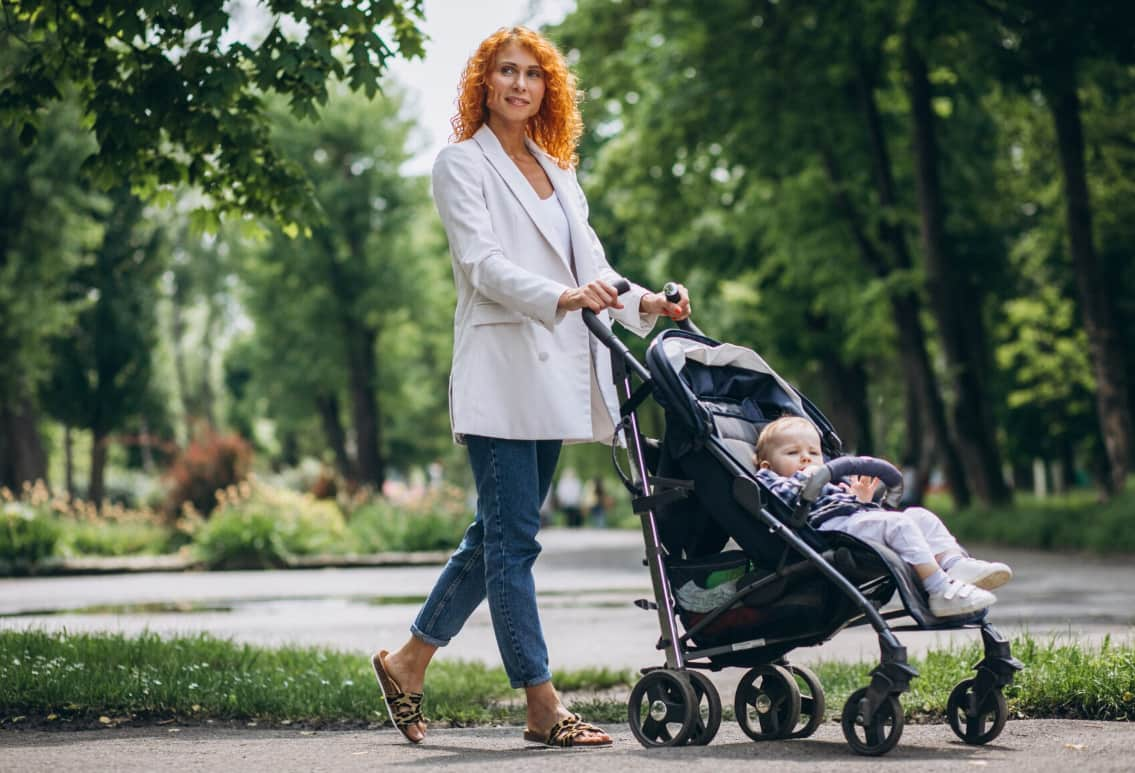Planning a trip with a baby can be challenging, especially when you need to bring along frozen breast milk. Whether you’re flying high in the sky or hitting the open road, traveling with your liquid gold doesn’t have to be a headache.
This guide will walk you through the ins and outs of safely transporting frozen breast milk, no matter your mode of travel.
Breast milk is precious, and keeping it safe during your journey is crucial. From packing tips to navigating airport security, we’ll cover everything you need to know.
You’ll learn about the rules and regulations, the best ways to keep your milk frozen, and what to do if unexpected delays pop up.
Don’t let worries about your breast milk stash hold you back from that family vacation or important business trip.
With the right knowledge and preparation, you can travel confidently, knowing your baby’s nutrition is taken care of.
How To Travel With Frozen Breast Milk?

In this comprehensive guide, we’ll break down the process step by step, making it easy for you to understand and follow.
So, whether you’re a first-time mom or a seasoned traveler, buckle up (or fasten your seatbelt) as we dive into the world of traveling with frozen breast milk.
What are the Guidelines for Traveling with Frozen Breast Milk?
When you’re planning to travel with frozen breast milk, it’s important to know the rules. These rules can be different depending on how you’re traveling and where you’re going.
For Air Travel in the United States:
The Transportation Security Administration (TSA) has some specific rules about breast milk:
- Breast milk is allowed: The TSA sees breast milk as a “medically necessary liquid”. This means you can bring more than the usual 3.4 ounces (100 mL) limit for liquids.
- Carry it on: You should pack your frozen breast milk in your carry-on bag, not in checked luggage.
- Use clear bottles: While not required, it’s best to use clear, see-through bottles for your milk. This makes it easier for security to check.
- Tell security: Let the TSA officers know you’re carrying breast milk before the screening starts.
For International Travel:
Rules can be different in other countries. Here are a few examples:
- Canada: Allows more than 100 mL of frozen breast milk on flights.
- UK: No limit on the amount of breast milk, but it must be in containers of 2000 mL or less.
Important: Always check the rules for your specific destination before you travel.
For Car Travel:
There aren’t specific rules for traveling with breast milk by car. But you should still take care to keep it frozen and safe during your trip.
What to Expect from Airport Security About Breast Milk Travel?
Going through airport security with frozen breast milk might seem scary, but it doesn’t have to be. Here’s what you can expect:
- Tell the officers: Let them know you have breast milk before screening starts.
- Separate the milk: You’ll need to take out your breast milk containers and show them to the officers.
- Screening process: The officers might:
- X-ray the containers
- Use a special liquid scanner
- Test for explosives (don’t worry, this is standard for all liquids)
- Opening containers: They might ask you to open a container. If you don’t want to, you can ask for other screening methods.
- Extra checks: If your milk is partially thawed or slushy, they might need to do more checks.
- Be patient: This process might take a little extra time, so be prepared and stay calm.
Remember, the TSA officers are just doing their job to keep everyone safe. Being polite and cooperative will make the process easier for everyone.
Things to Consider
Before you start packing your frozen breast milk for a trip, there are several important things to think about:
- Trip duration: How long will you be away? This affects how much milk you need to bring.
- Milk needs: Figure out how much milk your baby will need during the trip.
- Freezer access: Will you have access to a freezer at your destination?
- Flight duration: For air travel, how long is your flight?
- Feeding schedule: Will you need to feed your baby during the trip?
- Temperature control: How will you keep the milk frozen throughout your journey?
- Warming options: If you need to use the milk during travel, how will you warm it?
- Storage containers: What’s the best way to pack the milk for your type of travel?
- Backup plan: What will you do if there are travel delays?
- Local regulations: Are there any specific rules about transporting breast milk at your destination?
Thinking through these points will help you plan better and avoid surprises during your trip.
Preparation of Traveling with Frozen Breast Milk
Good preparation is key to successfully traveling with frozen breast milk. Here’s how to get ready:
- Freeze the milk properly:
- Use clean, sterilized containers.
- Leave some space at the top of each container (milk expands when it freezes).
- Label each container with the date it was expressed.
- Freeze the milk as soon as possible after expressing it.
- Choose the right containers:
- For air travel, clear, hard-sided containers are best.
- For car travel, you have more flexibility and can use bags or bottles.
- Organize your milk:
- Group milk by date, putting older milk in front for easy access.
- If using bags, freeze them flat to save space.
- Prepare your cooler:
- Choose a good quality, insulated cooler.
- Clean it thoroughly before use.
- Get ice packs ready:
- Freeze several ice packs ahead of time.
- Have extras on hand in case of delays.
- Security plan (if flying):
- Print out TSA guidelines for breast milk.
- Prepare to explain that you’re carrying breast milk.
- Pack extras:
- Bring extra storage bags or containers.
- Pack cleaning wipes for any spills.
- Check your destination:
- Confirm you’ll have freezer access where you’re going.
- If not, plan how you’ll use or store the milk.
By taking these steps, you’ll be well-prepared for your journey with frozen breast milk.
Packing Your Frozen Breast Milk
Packing your frozen breast milk correctly is crucial for keeping it safe during travel. Here’s a step-by-step guide:
- Choose your cooler:
- Pick a sturdy, insulated cooler.
- The size depends on how much milk you’re bringing and trip length.
- Line the cooler:
- Use aluminum foil to line the inside of the cooler.
- This helps keep the cold air in.
- Arrange the milk:
- Place the frozen milk containers in the cooler.
- Pack them tightly to reduce air space.
- Add ice packs:
- Put ice packs between and around the milk containers.
- Use more ice packs than you think you need.
- Fill empty spaces:
- Use crumpled newspaper or more ice packs to fill any gaps.
- The less air space, the better the cooler works.
- Seal it up:
- Close the cooler tightly.
- If possible, tape the lid for extra security.
- Label the cooler:
- Mark it as containing breast milk.
- Add your contact information.
- For air travel:
- Keep the cooler as your carry-on item.
- Be ready to open it for security checks.
- For car travel:
- Place the cooler in the coolest part of the car.
- Keep it out of direct sunlight.
- Double-check:
- Make sure everything is packed securely.
- Check that you have all the necessary items (extra bags, ice packs, etc.).
By following these steps, you’ll help ensure your breast milk stays frozen and safe throughout your journey.
How To Store Frozen Breast Milk?
Proper storage of your frozen breast milk during travel is essential. Here’s what you need to know:
Before the trip:
- Freeze the milk at 0°F (-18°C) or colder.
- Use within 6 months for best quality (up to 12 months is okay).
During travel:
- Keep the cooler closed as much as possible.
- Monitor the temperature if you can.
- Add more ice packs if needed.
At your destination:
- Put the milk in a freezer as soon as possible.
- If staying in a hotel, ask for a room with a freezer.
- If no freezer is available, use the milk within 24 hours.
Important storage times:
| Storage Method | Time |
|---|---|
| Room temperature | Up to 4 hours |
| Cooler with ice packs | Up to 24 hours |
| Refrigerator | Up to 4 days |
| Freezer | 6-12 months |
Remember:
- Once thawed, never refreeze breast milk.
- Use thawed milk within 24 hours.
- If milk smells sour or looks odd, don’t use it.
By following these storage guidelines, you can ensure your breast milk stays safe for your baby throughout your trip.
Heating and Feeding [If Needed]
Sometimes, you might need to use the breast milk during your trip. Here’s how to safely heat and feed it to your baby:
Thawing frozen milk:
- Gradual method: Move milk from the freezer to the fridge 24 hours before needed.
- Quick method: Hold the container under cool running water, slowly increasing the temperature.
Heating the milk:
- Warm water bath: Place the milk container in a bowl of warm (not hot) water.
- Bottle warmer: If you have access to one, follow the device instructions.
- Never microwave breast milk – it can create hot spots and destroy nutrients.
Testing the temperature:
- Shake the container gently to mix the milk.
- Drop a little milk on your wrist – it should feel warm, not hot.
Feeding tips:
- Use thawed milk within 24 hours.
- Never refreeze thawed milk.
- Throw away any milk left in the bottle after feeding.
For air travel:
- Ask a flight attendant for hot water to warm a bottle.
- Use bottled water if you need to mix the formula.
For car travel:
- Bring a travel bottle warmer that plugs into the car.
- Never feed the baby while the car is moving – always stop first.
Remember, it’s okay to give your baby cool or room temperature milk if they’ll accept it. Some babies don’t mind!
FAQs:
Here are some common questions about traveling with frozen breast milk:
- Q: Can I use the frozen breast milk after returning home?
A: Yes, if it stayed frozen. If it is thawed, use it within 24 hours.
- Q: How long does frozen breast milk last?
A: Up to 6 months is best, but it can be stored for up to 12 months in a deep freezer.
- Q: Does the weather matter when traveling with frozen breast milk?
A: Yes. Hot weather can cause milk to thaw faster. Use extra ice packs in warm conditions.
- Q: Can I take breast milk through airport security if I’m not traveling with my baby?
A: Yes, TSA allows this. Just inform the security officers.
- Q: What if my milk starts to thaw during the trip?
A: If it’s still cold and slushy, refreeze it as soon as possible. If it’s fully thawed, use it within 24 hours.
- Q: Can I mix freshly expressed milk with frozen milk?
A: Cool the fresh milk first before adding it to frozen milk.
- Q: What’s the best container for traveling with breast milk?
A: For air travel, hard plastic bottles are best. For car trips, milk storage bags work well too.
- Q: How do I clean pump parts while traveling?
A: Bring quick clean wipes or soap and a portable drying rack. Some hotels can provide hot water.
- Q: What if security wants to open my milk containers?
A: You can ask for alternative screening methods if you don’t want containers opened.
- Q: Can I pump on the plane?
A: Yes, but check with your airline first. Some have policies about this.
Also Check:
Conclusion:
Traveling with frozen breast milk might seem tricky at first, but with good planning, it’s doable.
Remember these key points:
- Know the rules: Understand TSA guidelines for air travel.
- Plan ahead: Think about your trip length and milk needs.
- Pack smart: Use a good cooler and plenty of ice packs.
- Stay flexible: Be ready to adjust if plans change.
- Keep it safe: Always prioritize proper storage and handling.
Whether you’re flying high or hitting the road, you can keep your liquid gold safe for your little one. Happy travels!
Remember, every trip is a new adventure. With these tips, you’re well-prepared to handle traveling with your frozen breast milk. Your baby will thank you for it!



